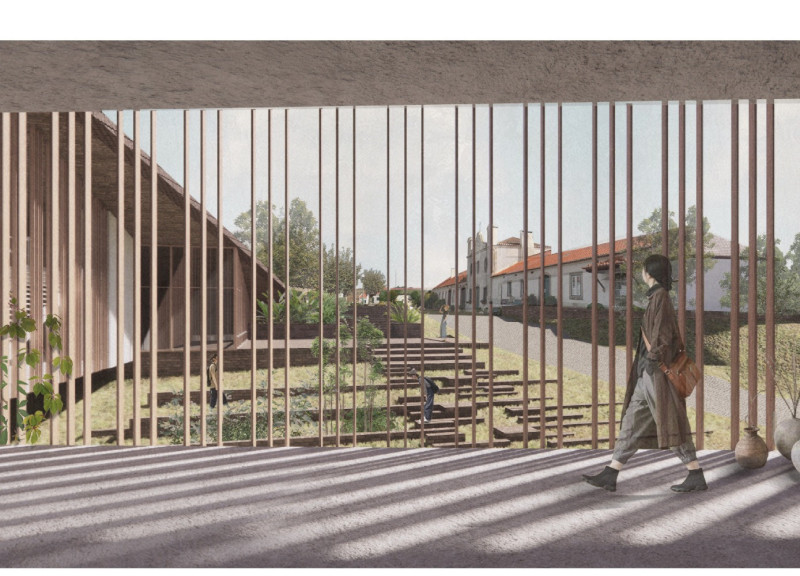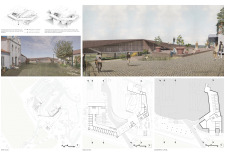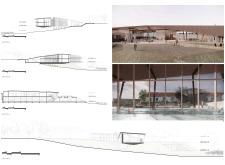5 key facts about this project
The Monte D'Oiro Wine Hotel is an architectural project designed to blend seamlessly with its vineyard surroundings. This facility serves as both accommodation and an immersive experience for wine tourists, allowing guests to engage with the region’s viticulture. The project emphasizes the relationship between architecture and landscape, providing an environment that enhances appreciation of both wine production and the natural beauty of the locale.
The building’s layout is organized in a horse-shoe shape, strategically situated to offer views over the surrounding vineyards. The design integrates form and function, creating spaces that prioritize comfort and connection to nature. The extensive use of glazing promotes natural light penetration while providing panoramic views, thereby drawing the landscape into the interior.
Structure and Materiality
The architectural design employs a mix of materials that reflect the local character while ensuring durability. Wood features prominently in the facade, creating warmth and a tactile connection to the agricultural context. The concrete elements provide necessary structural stability and contrast against the organic materials used throughout the project. Large glass panels create brightness and openness, emphasizing the harmony between indoor and outdoor spaces. Stone pathways and local planting reinforce the continuity of the site with its natural environment.
Innovative Design Elements
The Monte D'Oiro Wine Hotel incorporates several innovative design elements that set it apart from similar projects. The elevation of the building on slender columns establishes an airy feel while providing unobstructed views of the vineyards. The extensive use of sustainable practices, including energy-efficient systems and locally sourced materials, underlines a commitment to ecological sensitivity.
Unique to this project is the inclusion of an experiential courtyard designed for wine education and tasting. Named the "Grapes Courtyard," this area allows guests to witness the grape cultivation process, fostering a deeper understanding and appreciation of the winemaking tradition.
Visitor Engagement and Amenities
The design prioritizes visitor engagement, featuring spacious communal areas that encourage social interaction among guests. Room layouts are specifically crafted to enhance the guest experience, offering private balconies with vineyard views. Amenities include a restaurant that showcases local cuisine and wines, as well as facilities for relaxation and recreation tailored to both individual travelers and families.
Potential visitors and stakeholders are encouraged to explore the project presentation for comprehensive details on the architectural plans, sections, and designs. For deeper insights into the architectural ideas that shape this unique project, reviewing these elements will provide a clearer understanding of its impact on the region’s wine tourism landscape.























































